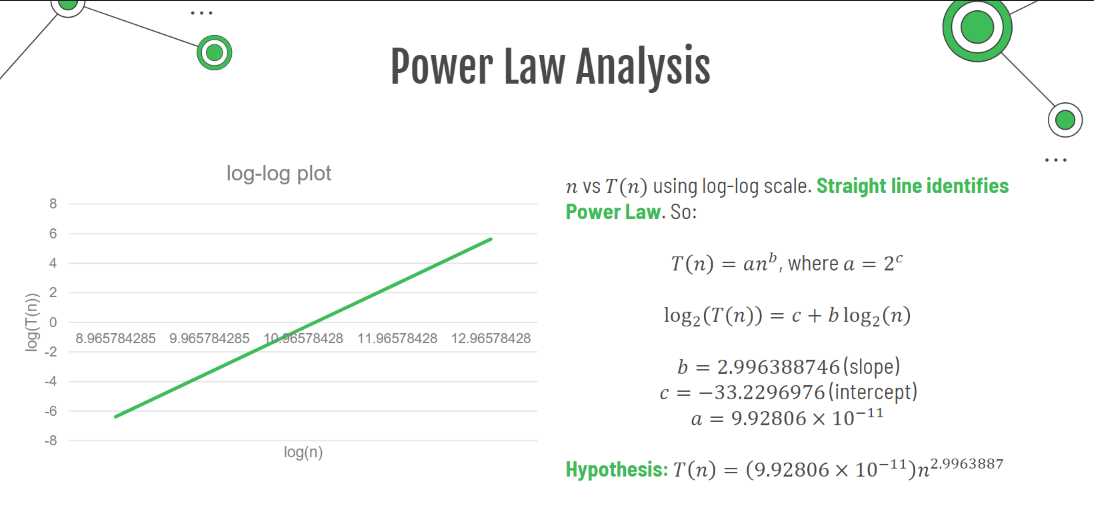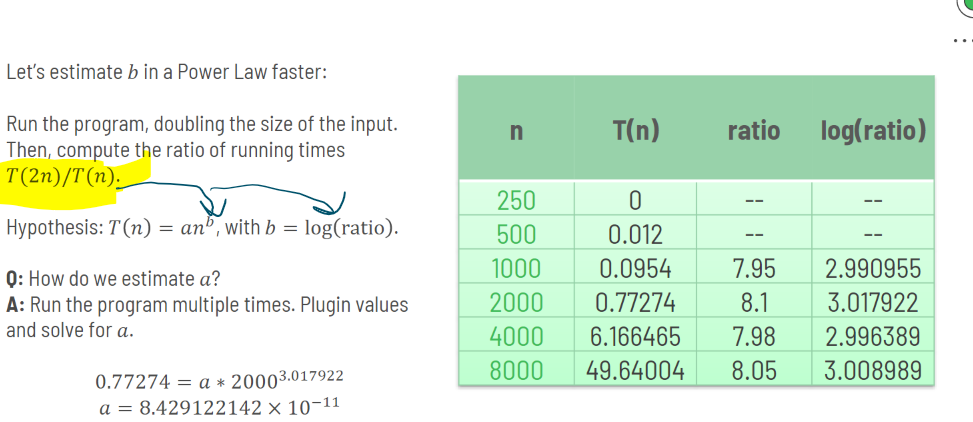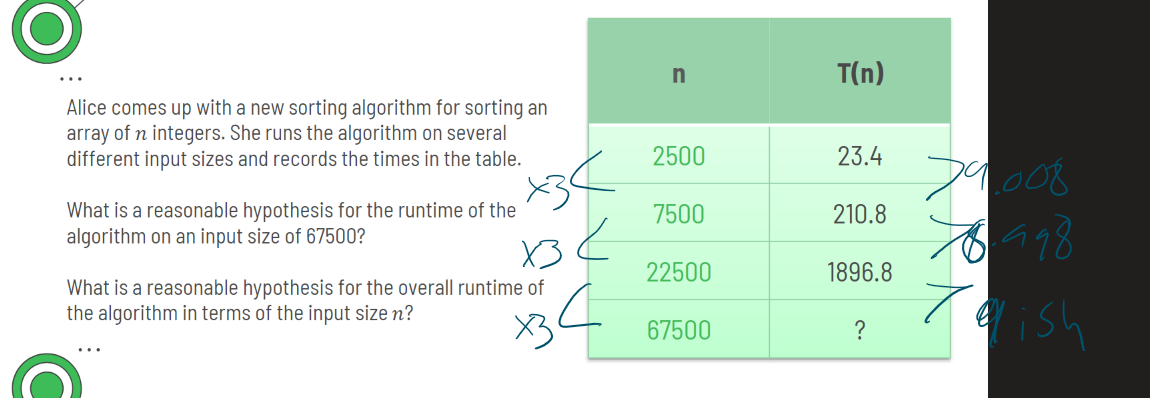#RuntimeAnalysis#Computer-Science#CS251
- The two main things we look at when analyzing algorithms are Time and Space. How much time does the program take to run? How much memory does it use?
- We use experimental analysis when we don’t have pseudocode of an algorithm to analyze, we only have results
- Experimental analysis is not always accurate
- Different machines can have varying runtimes, so looking at the time it takes to execute on one computer could be different from another
- There can be other processes (noise) interfering with the algorithms runtime
- In general it’s not always going to be precise
Power Law
- The Power Law states that
- If we plot n vs T(n) using a log log scale (take the log of both and plot that) and it ends up as a straight line, that means that the power law is at play

Doubling Hypothesis
- If the ratio between two consecutive entries in a table of input sizes/runtimes, then its a good hint that there is a polynomial based runtime

- Example

- We can see that each time the input size is tripled, the runtime is increased by a factor of roughly 9.
- A reasonable prediction for an input size of 67500 would be 9 times the previous runtime,
- If we assume the power law is in effect then we can find the runtime in terms of n
- - Tripling input size increases runtime by factor of 9